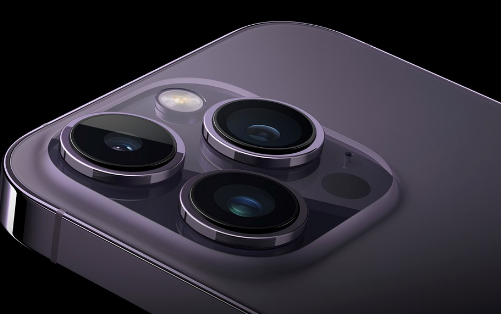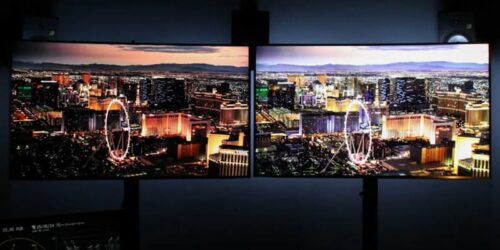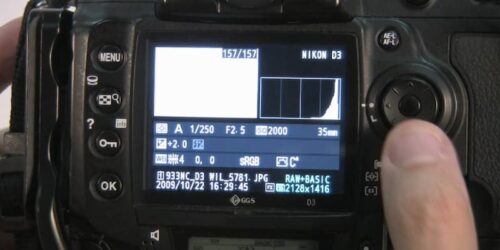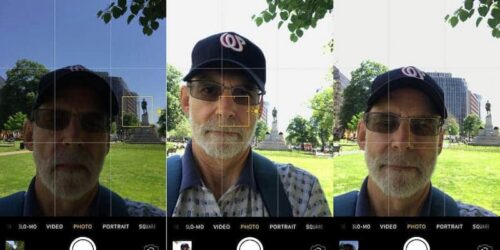Which iPhone Has 3 Cameras? 2023 Guide
iPhones are currently one of the best and most popular smartphones today. They are known for their ease of use, features, and ability to take high-quality images. However, some iPhone users have asked which iPhone has 3 cameras.
Although iPhones have improved through their features and specifications, only a select few models have iPhones with 3 cameras on the back. This article will go over what iPhone has 3 cameras and why they have them in the first place.
Table of Contents
What iPhone Has 3 Cameras?
Over the years, Apple has improved its iPhone model’s specs, including its cameras. The first iteration of iPhones, up until the iPhone 7, all had single-lens cameras. Later, they switched to dual-lens cameras on the bigger iPhone 7 Plus. Typically, all flagship Plus, Pro, and Pro Max models had multiple-camera lenses.
Apple had their first 3-camera iPhone in the iPhone 11 Pro and Pro Max. Released in 2019 along with the base model iPhone 11, the iPhone 11 Pro and Pro Max featured three cameras on their rear. They cost more but performed worse on the camera when compared to the iPhone 11.
A year later, Apple released the iPhone 12 lineup. This time, it included the first iPhone models to support 5G and OLED displays. However, it followed the same pattern: the Pro and Pro Max were only the 3-camera iPhone models.
As of 2022, here is the list of iPhone models with three cameras:
- iPhone 11 Pro
- iPhone 11 Pro Max
- iPhone 12 Pro
- iPhone 12 Pro Max
- iPhone 13 Pro
- iPhone 13 Pro Max
- iPhone 14 Pro
- iPhone 14 Pro Max

The First iPhone With Three Cameras
Apple’s first iPhone with 3 cameras was the iPhone 11 Pro and iPhone 11 Pro Max. The base model iPhone 11 does not have an OLED display and came with a dual-lens camera on the back. As a result, the price was lower.
Only the Pro models of Apple’s iPhone 11 had three rear cameras at launch, making them the first smartphones to do so. In 2020, Apple stuck to the same deal with its iPhone 12 range.
All of Apple’s iPhone 12 models, a first for any iPhone, came with OLED displays and 5G this time around.
Again, only the iPhone 12 Pro and the iPhone 12 Pro Max have three cameras on their backs in the iPhone 12 lineup. These are Apple’s top-tier 2020 models. Although they are the most expensive, they also have the best camera performance.
Why Do IPhones Have 3 Cameras?
iPhones with three cameras will include the main camera with wide lens capabilities, an ultra-wide lens, and a telephoto lens. As mentioned earlier, the first iPhone models with three rear cameras were the iPhone 11 Pro and Pro Max. It allowed 0.5x ultra-wide images that could capture one entire side of a room or two times zoom on the telephoto lens for close-ups or portraits.
The iPhone 12 Pro had the same range, but the Pro Max had 2.5x zoom capabilities. Also, the iPhone 13 Pro and Pro Max have even more extensive coverage, with 3x optical zoom.
To put into detail, here are the camera specifications for both the iPhone 12 Pro and Pro Max:
IPhone 12 Pro
- 12 MP, f/1.6, 26mm (wide), 1.4µm, dual-pixel PDAF (phase detection autofocus), OIS (optical image stabilization)
- 12 MP, f/2.0, 52mm (telephoto), 1/3.4″, 1.0µm, PDAF, OIS, 2x optical zoom
- 12 MP, f/2.4, 120°, 12mm (ultrawide), 1/3.6″
- TOF (time-of-flight) 3D LiDAR (light detection and ranging) scanner (depth)
IPhone 12 Pro Max
- 12 MP, f/1.6, 26mm (wide), 1.7µm, dual-pixel PDAF, sensor-shift stabilization (IBIS)
- 12 MP, f/2.2, 65mm (telephoto), 1/3.4″, 1.0µm, PDAF, OIS, 2.5x optical zoom
- 12 MP, f/2.4, 120°, 13mm (ultrawide), 1/3.6″
- TOF 3D LiDAR scanner (depth)
Based on the camera features above, the iPhone 12 Pro Max gives you more advanced sensors, zoom capabilities, and bigger apertures. Adding a third lens allows users to capture more defined photos, which experienced photographers and camera professionals notice.
Overall, iPhones have three cameras, mainly for aperture control, zoom range, and other image details.
iPhone Zoom Details
Digital zoom is the only option for iPhone models without telephoto lenses, and while it has improved recently, the photos it produces are typically still not of the highest quality. When possible, it’s preferable to merely move closer to the subject rather than sharing a digital zoom image. Without a doubt, some zoom would be helpful when taking a digital photo of a bird in a tree. The only way to take a picture of a wider area without an ultra-wide camera is to use a panorama. It only takes a short while for the iPhone’s panorama mode to transform a slow pan across the scene into a very wide view.
Given that the iPhone’s telephoto and ultra-wide lenses have smaller apertures than the main cameras, there is also the option to have some control over the aperture if an iPhone has multiple rear cameras. More of the scene is usually in focus at once when using smaller apertures, but moving objects exhibit more motion blur because slower shutter speeds are needed. iPhone owners with multiple cameras have more control over not only zoom range but several other finer details as well.
Final Thoughts
iPhones are mostly known for their ease of use, features, and camera quality. But in terms of camera features and image quality, its Pro and Pro Max models are unmatched. This is due to the addition of a third camera lens, which is in charge of providing greater control over image and capture details.
This guide should help you understand which iPhones have three cameras and why a third camera was added to the flagship models.
FAQs
Does iPhone 11 Have 2 Or 3 Cameras?
Rear Cameras. The major new feature in the iPhone 11 was an upgraded dual-lens camera system. As opposed to the iPhone XR’s single 12-megapixel camera lens, it has two 12-megapixel lenses: a ƒ/1.8 6-element wide-angle lens (26mm focal length) and a ƒ/2.4 5-element ultra wide-angle lens (13mm focal length).
Which iPhone 13 Camera is Best?
The iPhone 13 Pro is not just the latest and great iPhone, it’s also the best iPhone for photographers right now. With equivalent focal lengths of 26mm, 13mm, and 78mm for its three lenses, it has a standard, ultra-wide, and telephoto configuration.
Is There a Big Difference Between iPhone 13 and 14?
The big difference between the two iPhones is the improved camera capabilities in the iPhone 14, which include better (faster) low-light photography and the In contrast to Cinematic Mode, which debuted with the iPhone 13, Action Mode is unquestionably the flagship feature and one that many users are likely to use.





